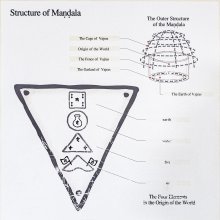Five Aggregates: 1 definition
Introduction:
Five Aggregates means something in Buddhism, Pali. If you want to know the exact meaning, history, etymology or English translation of this term then check out the descriptions on this page. Add your comment or reference to a book if you want to contribute to this summary article.
Images (photo gallery)
In Buddhism
General definition (in Buddhism)
Source: Wisdom Library: Dharma-samgrahaFive Aggregates or Five Components:—A technical term in Buddhism corresponding to the Sanskrit pañcaskandha defined in the Dharma-saṃgraha (section 22):
- Bodily-form (rūpa),
- Feelings (vedanā),
- Perceptions (saṃjñā),
- Volitions (saṃskāra),
- Consciousness (vijñāna).
The Dharma-samgraha (Dharmasangraha) is an extensive glossary of Buddhist technical terms in Sanskrit (e.g., pañca-skandha, ‘five aggregates’). The work is attributed to Nagarguna who lived around the 2nd century A.D.
See also (Relevant definitions)
Full-text (+56): Pancaskandha, Sakkaya, Samjna, Skandha, Pancakkhandha, Khandhapancaka, Upadanakkhandha, Samskara, Sakkaya Ditthi, Lokuttara, Upadanaskandha, Skandhanirodha, Hadaya Rupa, Namarupa, Duhkhajnana, Prajnapti, Prajnaptilakshana, Panca, Five Components, Sanna.
Relevant text
Search found 63 books and stories containing Five Aggregates; (plurals include: Five Aggregateses). You can also click to the full overview containing English textual excerpts. Below are direct links for the most relevant articles:
Philosophy of language in the Five Nikayas (by K.T.S. Sarao)
9. The Five Aggregates (pañcakkhandha) < [Chapter 4 - Philosophy of Language in the Five Nikāyas]
6.3. The Four Noble Truths < [Chapter 3 - Language and Meaning as Reflected in the Five Nikāyas]
14. Conclusion < [Chapter 4 - Philosophy of Language in the Five Nikāyas]
The Great Chronicle of Buddhas (by Ven. Mingun Sayadaw)
Part 17 - Notes on the Anatta-lakkhaṇa Sutta < [Chapter 42 - The Dhamma Ratanā]
Nibbāna (ultimate reality or ‘the cessation of suffering’) < [Chapter 6 - On Pāramitā]
Buddha attributes (1): Arahaṃ < [Chapter 42 - The Dhamma Ratanā]
Fundamentals of Vipassana Meditation (by Venerable Mahāsi Sayādaw)
Guide to Tipitaka (by U Ko Lay)
(c) Khandha Vagga Saihyutta Pali < [Chapter VI - Samyutta Nikaya]
(b) The Seven Books Of Abhidhamma < [Chapter IX - What Is Abhidhamma Pitaka?]
(a) Abhidhamma < [Chapter IX - What Is Abhidhamma Pitaka?]
Visuddhimagga (the pah of purification) (by Ñāṇamoli Bhikkhu)
D. Classes of Knowledge of the Aggregates < [Chapter XIV - The Aggregates (khandha-niddesa)]
Strengthening of Comprehension in Forty Ways < [Chapter XX - Purification by Knowledge and Vision of the Path and the Not-path]
Dependent Origination (i): Ignorance < [Chapter XVII - Dependent Origination (paññā-bhūmi-niddesa)]
The Buddhist Path to Enlightenment (study) (by Dr Kala Acharya)
1.3.4. Dhammānupassanā–Contemplation Of The Dhamma < [Chapter 2 - Five Groups of Factor]
5.3. Mental Power of Mindfulness (Satibala or Smṛti) < [Chapter 2 - Five Groups of Factor]
2.1. Right Understanding (Sammā-diṭṭhi or Samyag-dṛṣṭi) < [Chapter 3 - Seven Factors of Enlightenment and Noble Eightfold Path]
